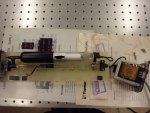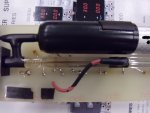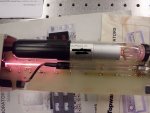Hi All
Our group has an old Spectra Physics 155 He-Ne laser in the storage room. I happen to found it sometime ago and amazingly it still works. The problem is that it will not switch on every time I turn it on---- like I have to try tens of time and there will be one click to fire the laser. I'm wondering if this is an electronics problem (like the starting circuit is loose somewhere) or is the tube is going bad? Much appreciated if someone can help me sort this out.
Attached are three pictures of the laser.
P.S. there seems to be some rust like stuff in the tube but I am not sure what they are...
Our group has an old Spectra Physics 155 He-Ne laser in the storage room. I happen to found it sometime ago and amazingly it still works. The problem is that it will not switch on every time I turn it on---- like I have to try tens of time and there will be one click to fire the laser. I'm wondering if this is an electronics problem (like the starting circuit is loose somewhere) or is the tube is going bad? Much appreciated if someone can help me sort this out.
Attached are three pictures of the laser.
P.S. there seems to be some rust like stuff in the tube but I am not sure what they are...







